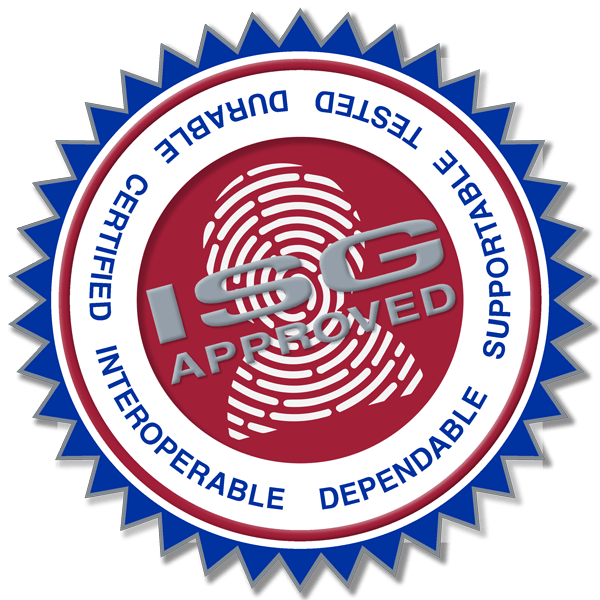Re-posted with permission from Campus Safety Magazine and edited.
Here’s a primer on proximity, smart card, smart phone credentials, readers and long-range solutions for campus access control.
In healthcare and education, it’s critically important to identify and control who comes and goes, but the topics of physical access control and identification badges can be a bit confusing.
Whether access control credentials are called badges, tokens or cards, they limit access to a facility to only those who possess one of these credentials. In many cases, workers can access their work areas but not locations such as food service, while the exact opposite holds true for cafeteria staff. Often, too, the security system is programmed to limit access only during specific time intervals, such as a few hours before and after a scheduled event. This is especially important for those venues that provide access credentials to vendors and/or delivery personnel.
However, when you start exploring the world of ID badge access, a whole new series of terms pop up: passive cards, active cards, proximity, smart cards, long range readers, Wiegand and so on. Let’s demystify them.
Passive Versus Active
Passive cards, the most popular, are powered by radio frequency (RF) signals from the reader. They do not have a battery of their own. Normally, they have a limited range of typically about four inches and must be held closely to the reader (hence, the term “proximity”). However, they can have a read range up to 20 inches.
The passive card and reader communicate with each other by an RF process called resonant energy coupling. Passive cards typically have three internal components — an antenna, a capacitor and an integrated circuit that holds the user’s ID number or other data. The reader also has an antenna that constantly generates a short-range RF field in a spherical orbit. When the card is placed within range of the reader, the card’s antenna and capacitor absorb and store energy from the field and resonate. This powers the integrated circuit, which sends the ID number to the card’s antenna, which, in turn, transmits by RF signals back to the reader.
Active cards are powered by an internal lithium battery. As a result, they can produce a much longer read range measured in feet and yards, from 4 inches to typically 15 feet. Their integrated circuit contains a receiver and transmitter that uses the battery’s power to amplify the signal so that the active card can be detected from farther away. However, the longer read ranges and that spherical orbit create a problem. Several readers and cards could end up conversing with each other, creating communication mayhem.
What is the most important thing you need to know about all this? Pick the solution that works best for the application and make sure you that you are using the right type of reader for the card.
125 KHz Proximity Cards & Readers
There are three main reasons why proximity cards and readers are still today’s most widely used ID badge technology. First, there is no contact between cards and the reader, which eliminates wear-and-tear. Second, proximity readers can be made very durable or even hidden into the wall to make them relatively vandal-resistant. Some are even bullet resistant. And, third, for almost 25 years, they have provided the most cost efficient front-end for an access control system. Thus, there is a massive installed base.
Proximity card readers communicate to the rest of the access control systems in various protocols, such as the Wiegand protocol, a de facto wiring standard that arose from the popularity of Wiegand effect card readers in the 1980s. Another popular protocol is the ABA Track II interface, a holdover from magnetic stripe card technology. Again, you don’t need to know what these protocols do or how they work. You just need to use the interface that the rest of the system uses.
When selecting a proximity card and reader for your application, there are several things to check. First, make sure they comply with one or both of the afore-mentioned two main interface protocols so that the cards and readers will interface with a wide range of electronic access control systems. Also, order readers that support several proximity card and tag technologies/brands. Check to see if the reader electronics are secured with tamper- and weather-resistant epoxy potting. This is important as, often, the readers are outdoors or in wet or dusty environments that aren’t suitable for electronics. Look for a lifetime warranty.
Most proximity manufacturers provide one of three types of cards: standard light, image technology and multi-tech card. The standard light proximity card is a clamshell design, meaning that there are two connected sides sealed together to hold the electronics. An image technology card is a slightly thicker card appropriate for dye sublimation printing. Lastly, the multi-tech card is a proximity card the same size as a credit card that might or might not have a magnetic stripe on it. It is commonly referred to as an ISO standard size. The most popular is the card/keypad reader.
Ask Your Local ISG Dealer
Before your read next week’s continuation of this article, consider talking with your local ISG expert about ID badging and access control solutions for your school, university, healthcare or corporate campus. Individual ISG dealer members offer a wide variety card, reader, access, software, printer and other solutions to help you build your own complete system.
Come back next week for Part 2!
Original article written by Scott Lindley for Campus Safety Magazine


